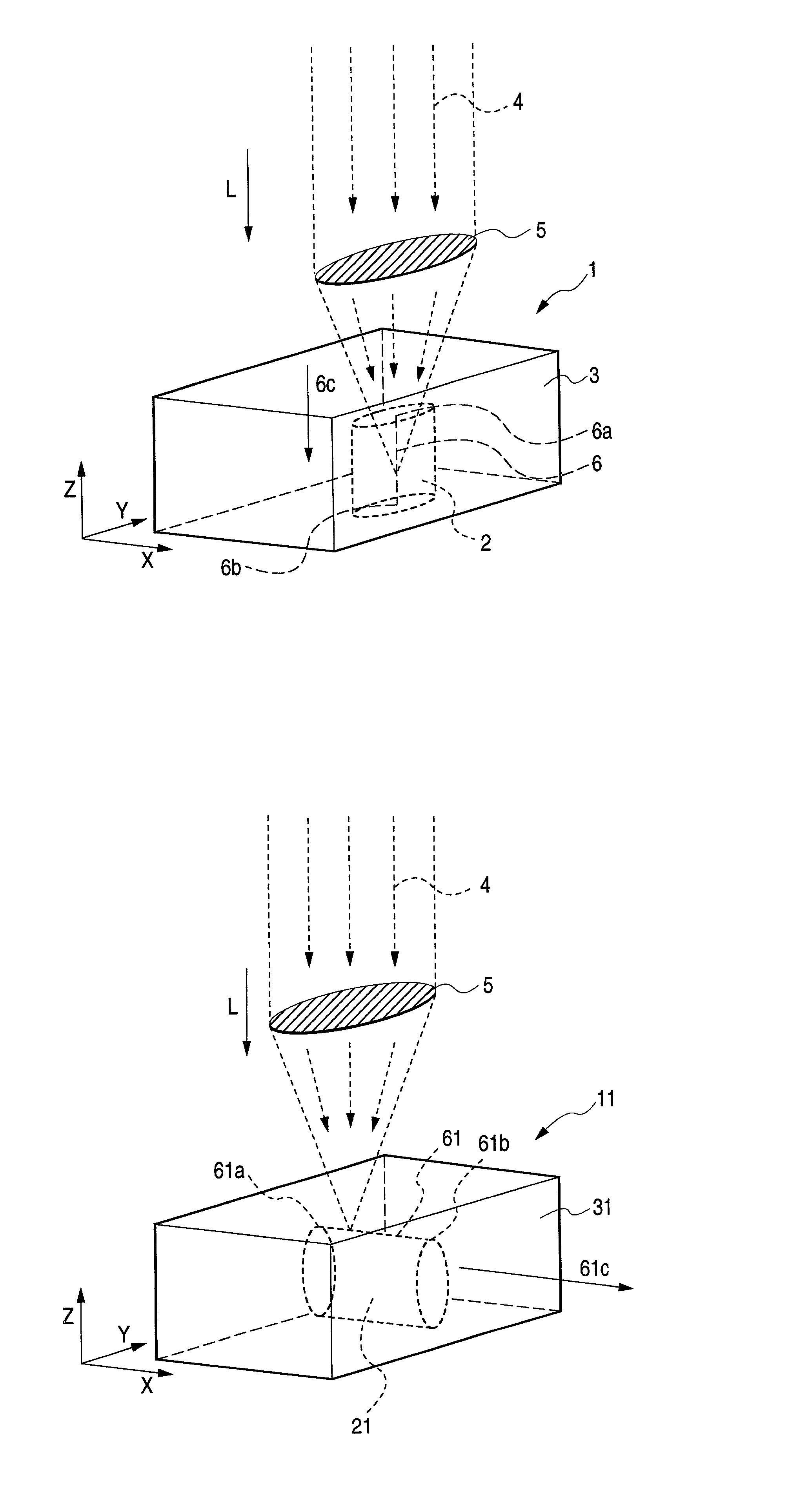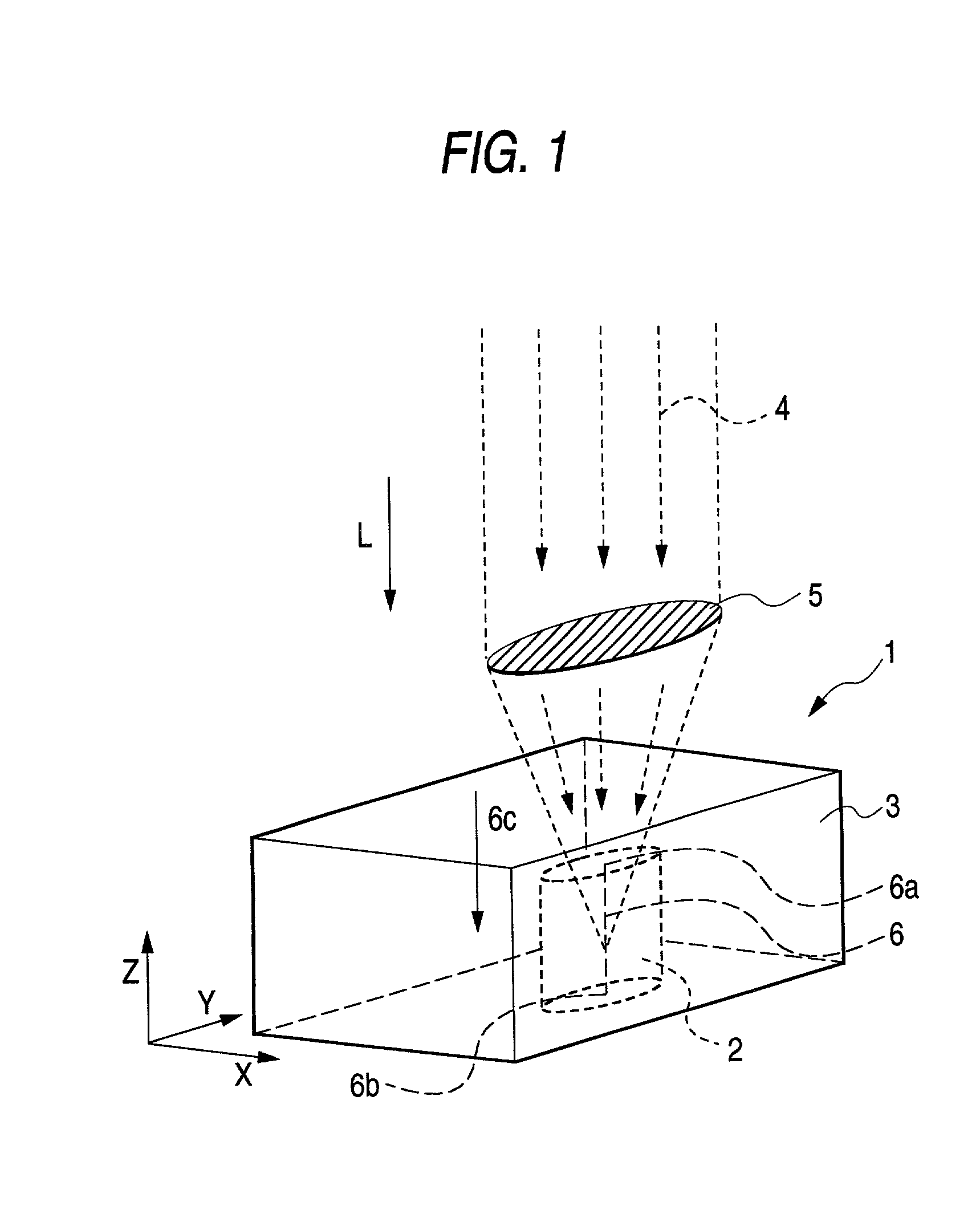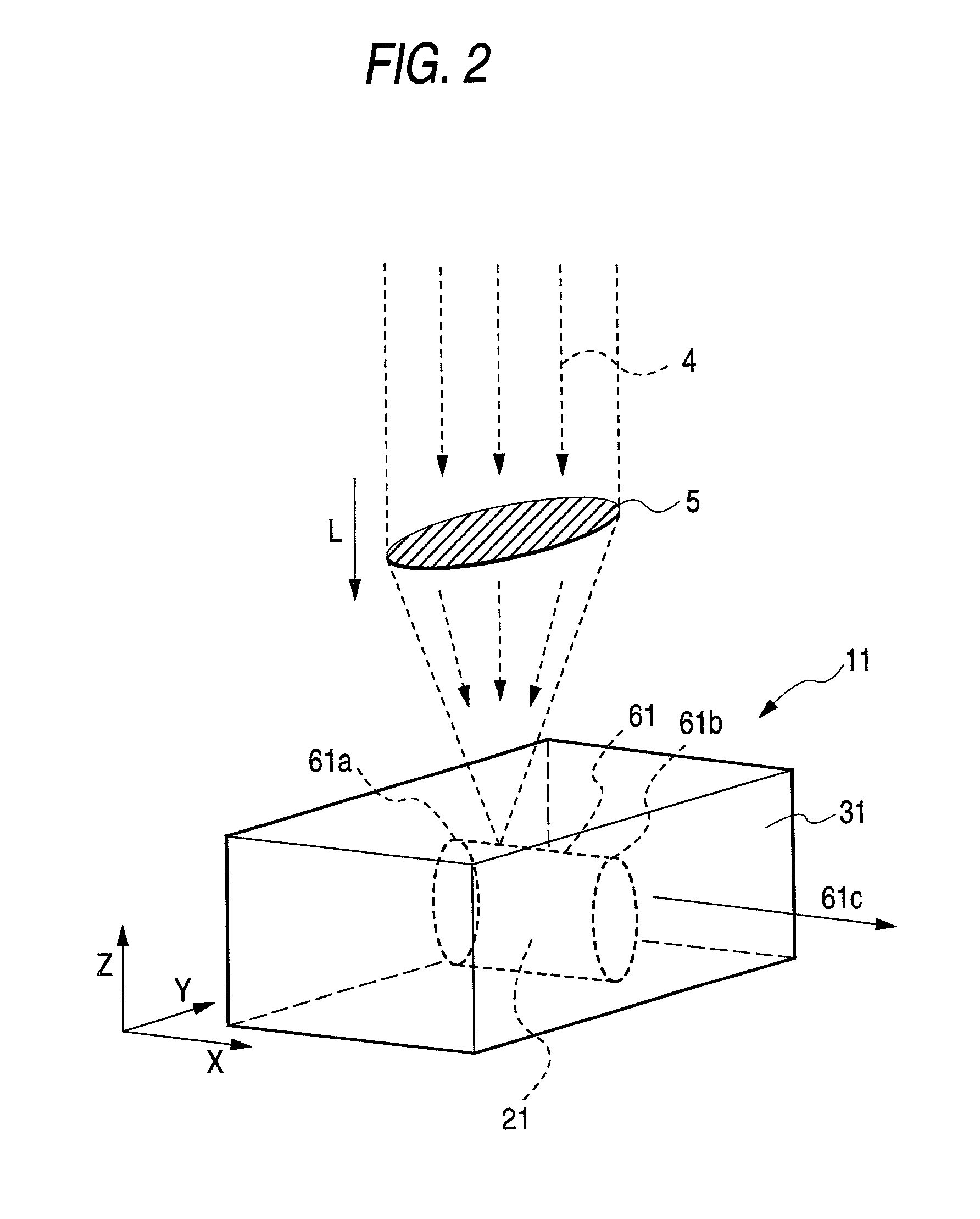Plastic object
a technology of plastic objects and objects, applied in the field of plastic objects, can solve the problems material deterioration, and unsuitability for use, and achieve the effects of low thermal conductivity of polymeric materials
- Summary
- Abstract
- Description
- Claims
- Application Information
AI Technical Summary
Problems solved by technology
Method used
Image
Examples
example 2
[0073] Irradiation with an ultrashort-pulse-duration laser light was conducted in the same manner as in Example 1, except that an objective lens having a magnifying power of 20 diameters was used. As a result, a structurally modified part having a structure different from that of the original sample A was formed in the sample A. This structurally modified part extended from the focus position where irradiation with the ultrashort-pulse-duration laser light had been initiated (irradiation initiation position) to the focus position where the irradiation had been terminated (irradiation termination position). Thus, a plastic object having the structurally modified part was obtained. In this structurally modified part, a section thereof obtained by cutting along a plane perpendicular to the focus position traveling direction had a nearly elliptic shape (approximately elliptic shape). The nearly elliptic shape had a minor-axis length of about 5 .mu.m and a major-axis length of about 40 ....
example 3
[0074] Irradiation with an ultrashort-pulse-duration laser light was conducted in the same manner as in Example 1, except that the following sample B (a rectangular parallelopiped having a thickness of 0.5 mm) was used as the sample to be irradiated. As a result, a structurally modified part having a structure different from that of the original sample B was formed in the sample B. This structurally modified part extended from the focus position where irradiation with the ultrashort-pulse-duration laser light had been initiated (irradiation initiation position) to the focus position where the irradiation had been terminated (irradiation termination position). Thus, a plastic object having the structurally modified part was obtained. In this structurally modified part, a section thereof obtained by cutting along a plane perpendicular to the focus position traveling direction had a nearly rectangular shape (approximately rectangular shape). The nearly rectangular shape had a minor axi...
PUM
| Property | Measurement | Unit |
|---|---|---|
| length LL | aaaaa | aaaaa |
| length LL | aaaaa | aaaaa |
| distance | aaaaa | aaaaa |
Abstract
Description
Claims
Application Information
 Login to View More
Login to View More - R&D
- Intellectual Property
- Life Sciences
- Materials
- Tech Scout
- Unparalleled Data Quality
- Higher Quality Content
- 60% Fewer Hallucinations
Browse by: Latest US Patents, China's latest patents, Technical Efficacy Thesaurus, Application Domain, Technology Topic, Popular Technical Reports.
© 2025 PatSnap. All rights reserved.Legal|Privacy policy|Modern Slavery Act Transparency Statement|Sitemap|About US| Contact US: help@patsnap.com



